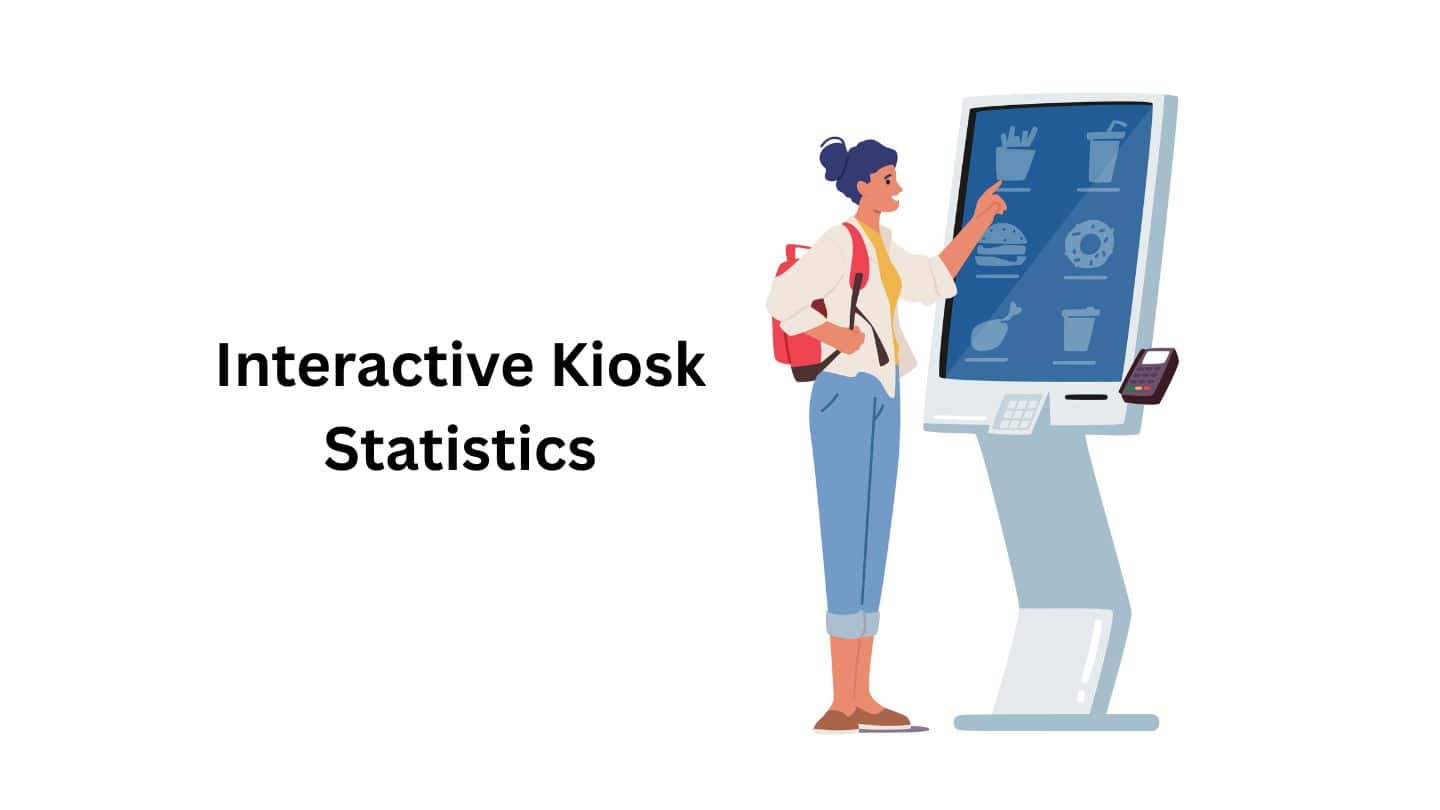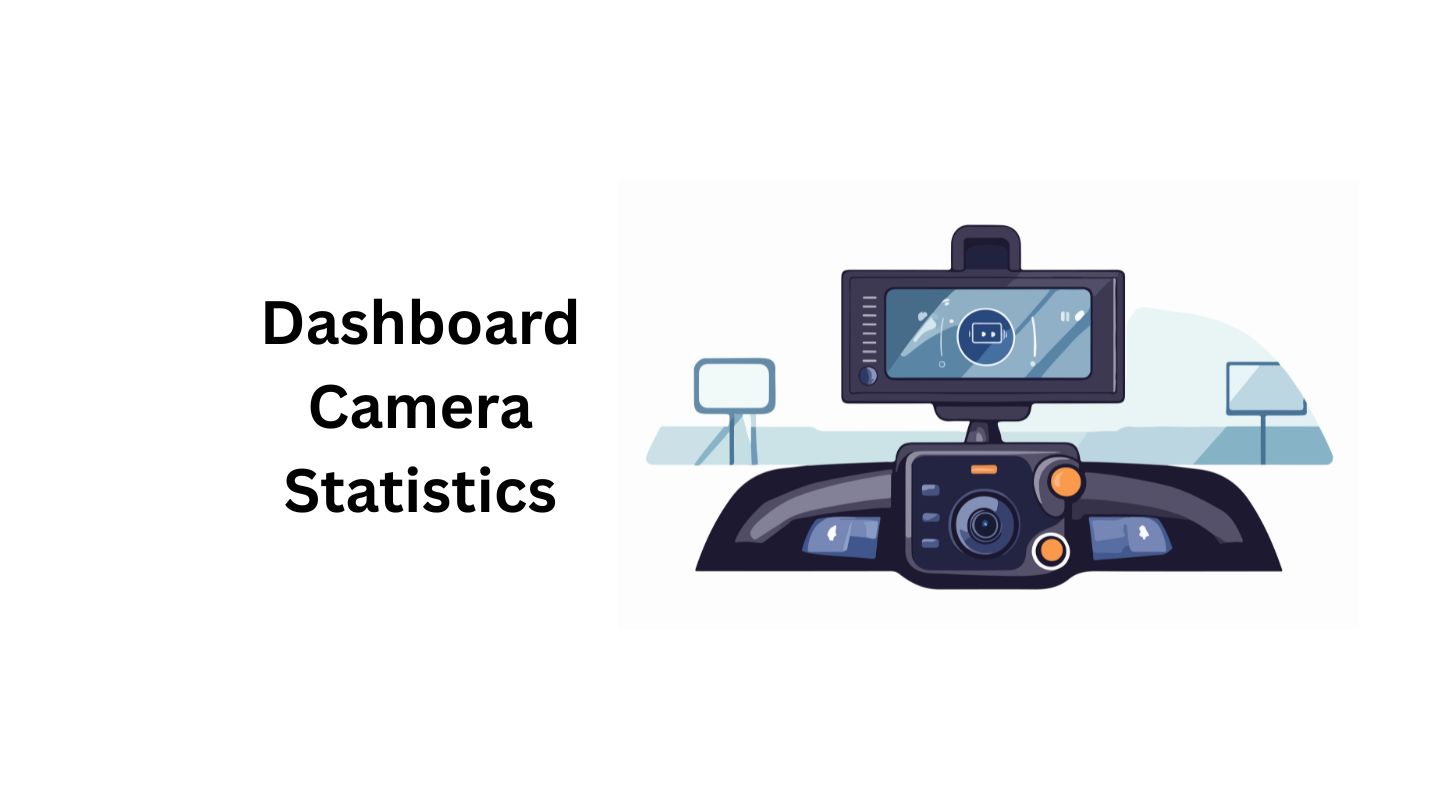EdTech Statistics By Market Size, Revenue, Tech Impact On Education and Facts

Updated · Mar 05, 2025


TABLE OF CONTENTS
Introduction
EdTech Statistics: EdTech is transforming education by making learning more interactive and accessible. Schools and universities now use digital tools, online platforms, and smart classrooms to improve teaching methods. Over time, AI-powered learning tools, virtual classrooms, and educational apps have become common in education.
The COVID-19 pandemic increased the demand for online learning, causing fast growth in the EdTech industry. More students prefer self-paced learning, and schools are investing in technology-based education.
This article will discuss important EdTech statistics, such as market trends, growth rates, and adoption levels, to show how technology is shaping the future of learning.
Editor’s Choice
- The EdTech market is projected to reach USD 163.49 billion in 2024, growing at a 4% compound annual growth rate (CAGR) from 2024 to 2030.
- In 2024, EdTech venture capital investments totaled USD 1.8 billion, marking the lowest level since 2014 and representing only 2% of total venture capital since 2010.
- The global EdTech market is anticipated to grow by USD 170.8 billion between 2025 and 2029, with a CAGR of 9% during this period.
- As of 2023, the Education Technology market is valued at USD 142.37 billion. It is expected to grow to USD 421 billion by 2032.
- North America holds the largest share of the market, making up 36% of the total global market share.
- In the past 5 years, the demand for EdTech has increased by 232%.
- The global education software/app market generated USD04 billion in revenue in 2023 and is projected to reach USD 11.61 billion by 2025.
- The education industry is valued at USD 6.5 trillion, but digital adoption is still in the early stages.
- EdTech use in K -12 schools has grown by 99% since 2023, and many colleges plan to start online undergraduate programs within three years.
- Around 36% of teachers know about EdTech but don’t fully understand it, while 14% have never heard of it.
- 60% of academy school teachers feel they lack training, and 75% in Northern Ireland say they don’t have enough access.
- In the UK, 37% of teachers buy tech supplies for students. Nearly 79% of teachers use EdTech daily..
You May Also Like To Read
- Augmented Reality Statistics
- Metaverse Statistics
- Virtual Reality Statistics
- Quantum Computing Statistics
- Biometrics Statistics
- Ransomware Statistics
- Robocalls Statistics
- Data Breach Statistics
- Laptop Statistics
- Desktops Statistics
- Smartphone Statistics
- VoIP Statistics
What is Education Technology?
Education Technology, or EdTech, is the use of digital tools and technology to improve learning and teaching. It includes online courses, educational apps, virtual classrooms, and smart devices that help students and teachers. Schools, colleges, and companies use EdTech to make learning more interactive, flexible, and accessible. With the help of artificial intelligence (AI), virtual reality (VR), and e-learning platforms, students can learn at their own pace. EdTech is changing traditional education by making knowledge available anytime and anywhere. It helps learners understand subjects better and prepares them for the future with new skills and knowledge.
Top 10 EdTech Companies Statistics
- Coursera: This platform offers over 7,000 courses to 113 million learners, collaborating with more than 200 universities and companies.
- Duolingo: Provides gamified language learning, boasting 113.1 million monthly active users, including 8.6 million subscribers.
- Udacity: Specializes in digital upskilling, delivering Nanodegree programs in tech fields to bridge the skills gap.
- Khan Academy: It offers free educational resources, serving over 18 million learners monthly worldwide.
- Chegg: Provides textbook rentals and online tutoring, with 3.8 million subscribers as of the third quarter.
- Edmentum: Edmentum delivers online learning solutions to 8,000 school districts, impacting 14 million students.
- Blackboard: It serves 100 million users across 90 countries through its learning management system.
- BYJU’s: India’s leading EdTech platform, engaging over 150 million students with interactive learning.
- Google Classroom: Expanded from 40 million to over 150 million users during the pandemic, facilitating virtual classrooms.
- Zoom: Supported over 90,000 schools globally for online classes during peak pandemic periods.
EdTech Demographic Statistics
- Education has improved worldwide, but access and quality still vary. UNESCO reports that in many low—and middle-income countries, fewer than one in 100 adults from the poorest families earns a degree.
- The United States leads in online education, with 19 million students on Coursera.
- Meanwhile, India and China are expanding their online learning programs and becoming major players in the EdTech industry.
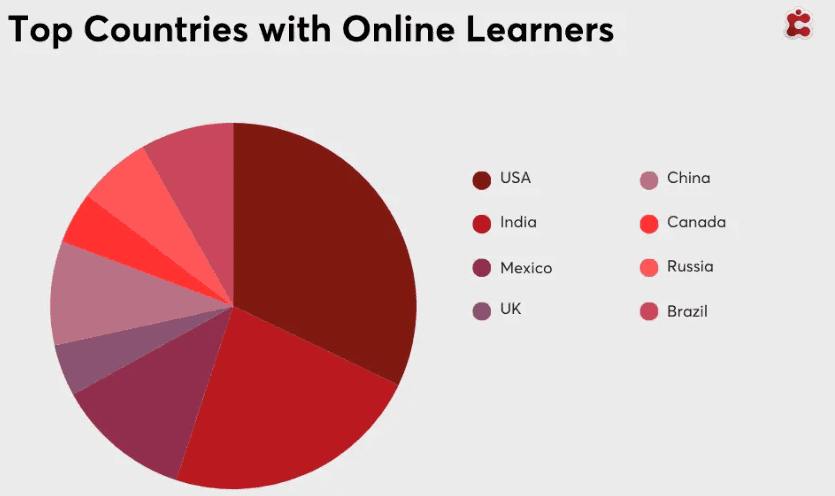 (Source: classter.com)
(Source: classter.com)
- The biggest group using EdTech is 25 to 34 years old, making up 39% of users.
- EdTech Statistics show that the second-largest group is 18 to 24 years old, accounting for 56%.
- Men represent 35% of users, while women make up 43.65%.
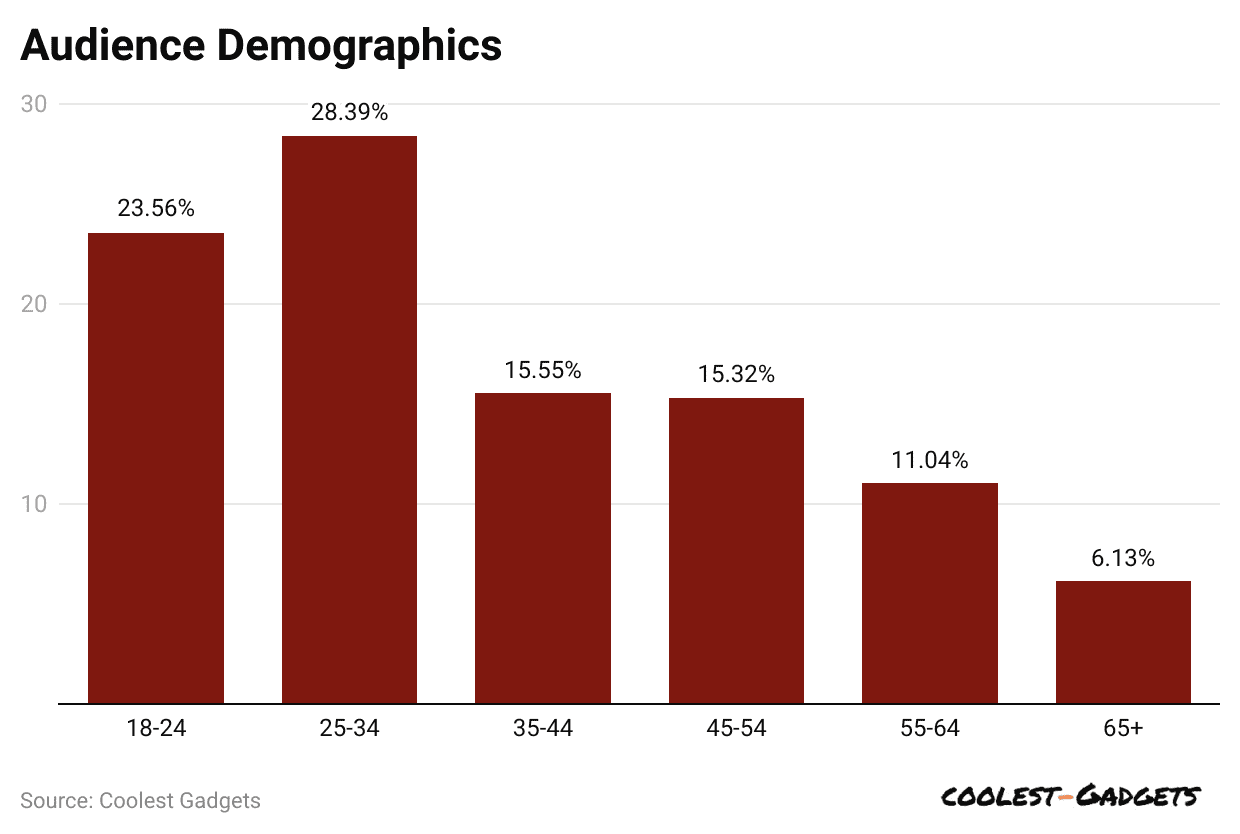 (Reference: classter.com)
(Reference: classter.com)
| Age Group | % |
|
18-24 |
23.56% |
| 25-34 |
28.39% |
|
35-44 |
15.55% |
| 45-54 |
15.32% |
|
55-64 |
11.04% |
| 65+ |
6.13% |
EdTech Market Size By Market.us
(Source: market.us)
- EdTech Statistics stated that the global EdTech market is expected to grow significantly, reaching USD 810.3 billion by 2033, with a growth rate (CAGR) of 9% from 2024 to 2033.
- In 2023, North America led the EdTech industry, with a 3% market share and USD 82.24 billion in revenue.
- The Middle East and Africa accounted for 31%, while Europe had 6%.
- The Asia-Pacific region contributed 1%, and Latin America held 5.9% of the total market.
- On-premise solutions dominated the market, making up 8% of EdTech adoption. Hardware was another key area, covering 40.7% of the sector.
- The K-12 education sector used the most EdTech tools, accounting for 9% of the market.
- However, the corporate sector applied EdTech the most, with a 1% market share, valuing the corporate EdTech industry at USD 27.5 billion.
- More than 70% of colleges are planning to introduce new online undergraduate programs within three years.
- In India, the EdTech sector raised USD 278 million in funding in the first nine months of 2024, marking a 3% increase from 2023.
- Of this, PhysicsWallah alone contributed USD 210 million. Additionally, funding in Q3 2024 surged to USD 224 million, a 357% rise from Q3 2023 (USD 49 million).
- Studies show that students who use EdTech tools for more than 60 minutes per week perform better academically.
- eLearning improves knowledge retention by 25-40%, while 84% of learners find gamified EdTech more engaging.
- Also, 61% of HR leaders believe that online credentials are as valuable as traditional degrees.
- The EdTech industry is expected to continue growing, with a projected CAGR of 15% in the coming years.
(Source: market.us)
- The Global K -12 Education Technology Market is expected to grow significantly, reaching USD 253.9 billion by 2033, up from USD 78.2 billion in 2023.
- This market is projected to expand at an annual growth rate (CAGR) of 5% from 2024 to 2033.
- AI in the EdTech sector is also growing rapidly. It is predicted to rise from USD 3.65 billion in 2023 to USD 92.09 billion by 2033, showing an impressive CAGR of 1%.
- Meanwhile, the Generative AI in the EdTech market is set to increase from USD 268 million in 2023 to USD 8.32 billion by 2033, with a strong CAGR of 41%.
- The global EdTech market is estimated to expand from USD 146.0 billion in 2023 to USD 549.6 billion by 2033, growing at a 2% CAGR.
- Similarly, the EdTech and Smart Classroom market will reach USD 498.5 billion by 2032, up from USD 146.8 billion in 2023, with a CAGR of 15%.
- In 2023, the cloud-based segment dominated the K -12 education technology market, holding over 70% of the market share.
- The software segment accounted for more than 41%, while the K-12 segment led with a 70%
- The consumer segment had the largest control, making up 80% of the market.
- North America was the top region in this market, securing over 36% of the total share in 2023. Its revenues reached USD 28.1 billion.
You May Also Like To Read
- iPhone Vs. Android Statistics
- Google Pixel Smartphones Statistics
- iPhone vs Android Users Statistics
- Mesh Wi-Fi System Statistics
- Robots Statistics
- Western Digital Statistics
- Cloud Gaming Service Statistics
- Virtual Reality Headset Statistics
- AI in Robotics Statistics
- 3D Printers Statistics
- Smart City Statistics
- 3D Printing Statistics
Impact of Technology Statistics
- The global AI education market was valued at USD 4 billion in 2022. It is expected to grow by 10% annually from 2023 to 2030.
- North America is currently the leader in AI education, while Europe is predicted to grow 15% faster by the end of 2032.
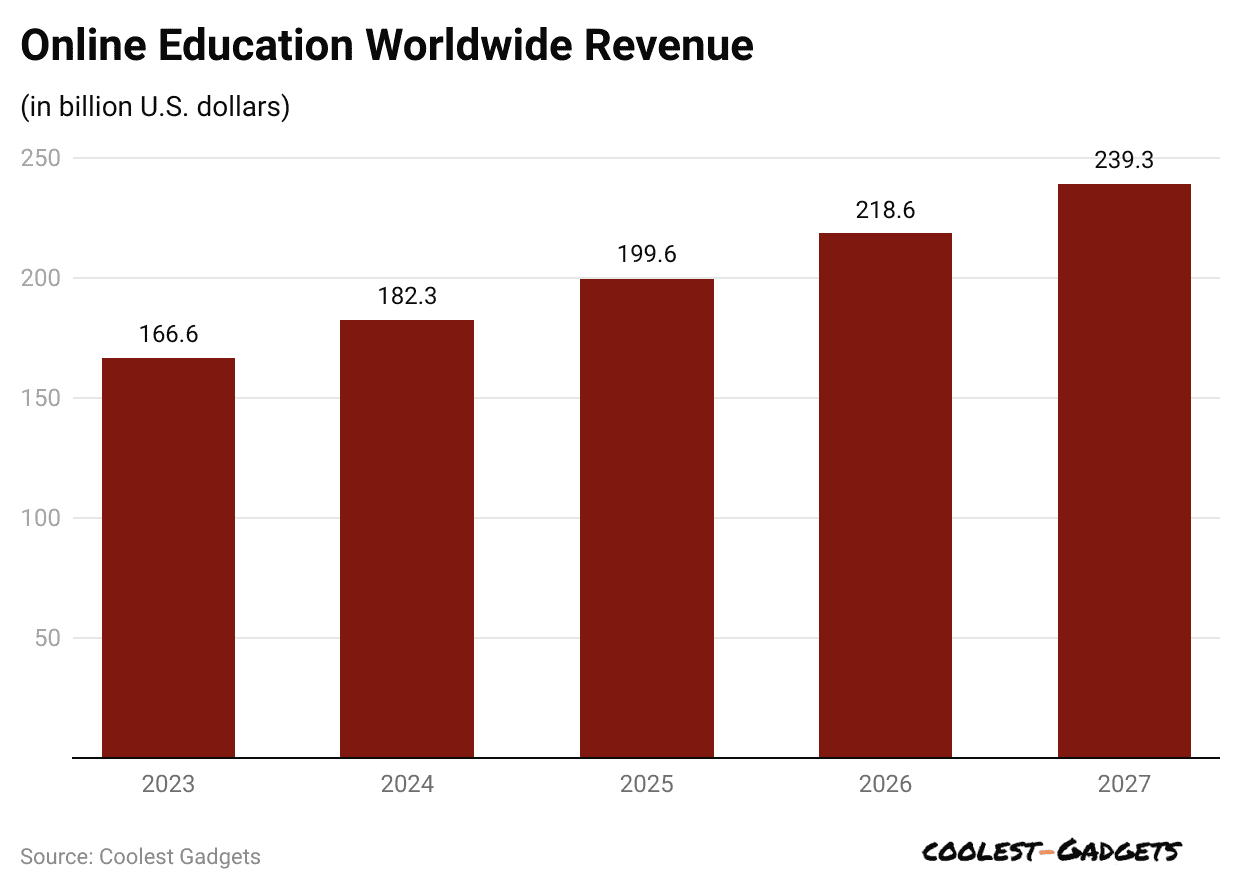 (Reference: classter.com)
(Reference: classter.com)
- More students, including graduates and working adults, are using online learning platforms to gain new skills and grow in their careers. This proves that e-learning is not just temporary but a long-term shift in education.
- After the COVID-19 pandemic, 98% of universities switched to online classes. Nearly 50% of Fortune 500 companies have included e-learning in their business strategies.
- Research shows that 70% of university students find online education more helpful than traditional classroom learning.
- School data reveals that 95% of students would suggest online learning to others.
- EdTech Statistics show that compared to in-person learning, it creates 85% fewer CO2 emissions and uses 90% less energy per student.
- The corporate e-learning market will grow by 15% from 2017 to 2026.
- The global e-learning market is expected to grow to $491.35 billion by 2028 at 28% annually.
- ket is predicted to reach $491.35 billion by 2028, growing at an annual rate of 13.28% from 2022 to 2028.
EdTech Regional Statistics
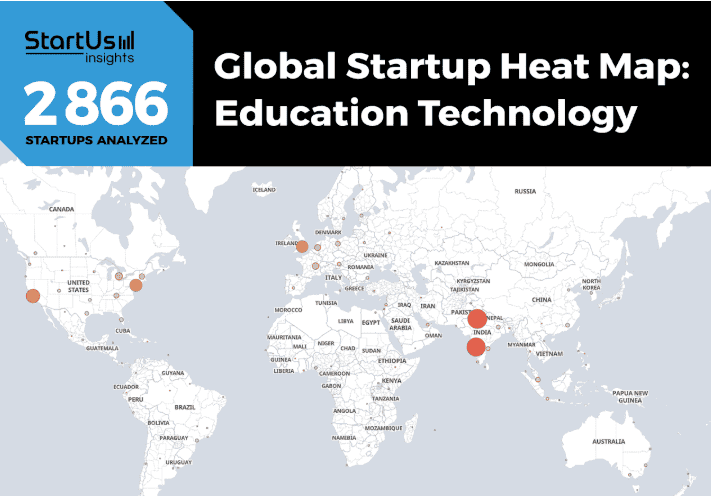 (Source: enterpriseappstoday.com)
(Source: enterpriseappstoday.com)
North America
- The EdTech market in North America is predicted to increase by USD 55.8 billion by 2030, growing at an annual rate of 14.3%.
- In the U.S., the market is set to reach USD 38.5 billion by 2027, with an annual growth rate of 18.1%.
- EdTech Statistics states that North America’s EdTech market will expand to USD 27.8 billion by 2028, fueled by the demand for mobile-based learning and personalised education.
Europe
- Experts predict that the European EdTech market will reach USD 19.3 billion by 2025, growing at an annual rate of 16.3% from 2021 to 2025.
- The UK, Germany, and France are the top three EdTech markets in Europe.
Asia-Pacific
- The Asia-Pacific region is growing the fastest in the EdTech industry, with an expected annual growth rate of 16.1% from 2023 to 2030.
- China is the largest EdTech market in the world and is projected to reach USD 105.9 billion by the end of 2023. The online education sector in China is expected to grow to USD 196.3 billion in 2023, increasing at a 8% annual rate from 2018 to 2023. Around 309 million people in China will be using online learning platforms by 2023. The English language learning market in China is also expected to reach USD 24.3 billion.
- India is the second-largest EdTech market in Asia-Pacific, with an estimated growth to USD 10.4 billion by 2023. It has a rapid annual growth rate of 44.4% from 2018 to 2023. India will have around 6 million online learners by 2023. The test preparation market is also growing and is expected to reach USD 1.3 billion.
- Japan is the third-largest EdTech market in Asia-Pacific, with a projected value of USD 4.8 billion by 2023. The online education sector is set to reach USD 1.3 billion in 2023, growing at 6% annually. Japan will have 1.8 million online learners, and its e-learning market will expand to USD 2.5 billion.
Latin America
- The Latin American EdTech market is growing rapidly, and its annual growth rate is expected to be 17.9% until 2025.
- Brazil has the largest EdTech market in the region, attracting 47% of all EdTech investments.
- Mexico and Colombia are also important players, securing 25% and 9% of investments, respectively.
- The leading EdTech sectors in Latin America include: Language learning (25%), and Vocational training (24%).
Middle East & Africa
- The EdTech market in the Middle East and Africa is expanding rapidly.
- An international learning platform raised USD 40 million, the largest investment in EdTech in the Middle East and North Africa (MENA) region.
- A report from GlobeNewswire predicts that the EdTech market in this region will reach USD 347.88 billion by 2031, growing at an annual rate of 19.1%.
College EdTech Statistics
- EdTech is changing the way college students learn, study, and communicate.
- Online degree programs have existed for years, but new EdTech tools are helping students in better ways.
- Around 80% of college students say these tools improve their grades, making learning easier and more effective.
- However, 84% believe EdTech could be used even more for better education.
- Nearly 90% of students think EdTech should match their learning style.
- For 49%, a personalised approach is very important.
- Many students also feel that custom quizzes help them remember lessons and learn faster.
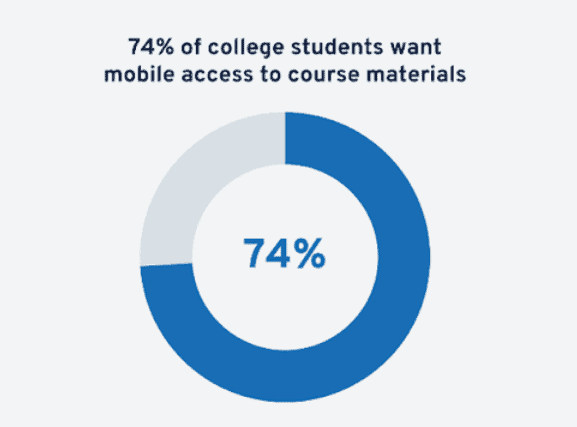 (Source: explodingtopics.com)
(Source: explodingtopics.com)
- Turning learning into games or challenges (gamification) can help students improve their results by up to 35%.
- When learning is fun and interactive, students perform even better, especially when combined with reading activities.
- In some cases, this method can increase performance by up to 60%.
- More than 70% of colleges plan to offer at least one online undergraduate program over the next three years.
- As more students prefer online education, the demand for online degree programs is rising. More than 50% of online students say they would drop out if their school did not provide online classes.
- About 74% of college students want to access their course materials on smartphones.
- Since students use phones frequently, having mobile-friendly learning content is now more important.
 (Reference: market.us)
(Reference: market.us)
The education software market has been steadily growing over the years.
- 2019 – USD 9,917 million
- 2020 – USD 10,673 million
- 2021 – USD 10,854 million
- 2022 – USD 11,039 million
- 2023 – USD 11,227 million
- 2024 – USD 11,418 million
- 2025 – USD 11,610 million
In higher education, less than 1 in 8 college students have taken a Massive Open Online Course (MOOC) like Coursera or Udemy.
Reports show that only 13% have joined a free online course, and 4% plan to enroll in one next year. EdTech is improving education, and these trends will likely increase.
Conclusion
EdTech is growing quickly and changing how people learn and teach. With technology, education becomes more accessible and personalised for everyone. Students can learn at their own pace in a way that suits them, making learning more flexible. However, there are challenges. Many people lack reliable internet, making it hard to access online learning.
Some students may not get equal opportunities to quality education through EdTech. Even with these issues, EdTech has great potential. As technology improves, more people are using it to enhance education. This article highlights important EdTech statistics.
Sources
FAQ.
The EdTech market was worth USD 125.2 billion in 2022. It is predicted to grow at an annual rate of 15.50% from 2023 to 2032.
The global EdTech market was worth USD 334.29 billion in 2023 and is expected to reach USD 738.60 billion by 2029, growing at an annual rate of 14.13% during this time.

Joseph D'Souza started Coolest Gadgets in 2005 to share his love for tech gadgets. It has since become a popular tech blog, famous for detailed gadget's reviews and companies statistics. Joseph is committed to providing clear, well-researched content, making tech easy to understand for everyone. Coolest Gadgets is a trusted source for tech news, loved by both tech fans and beginners.







